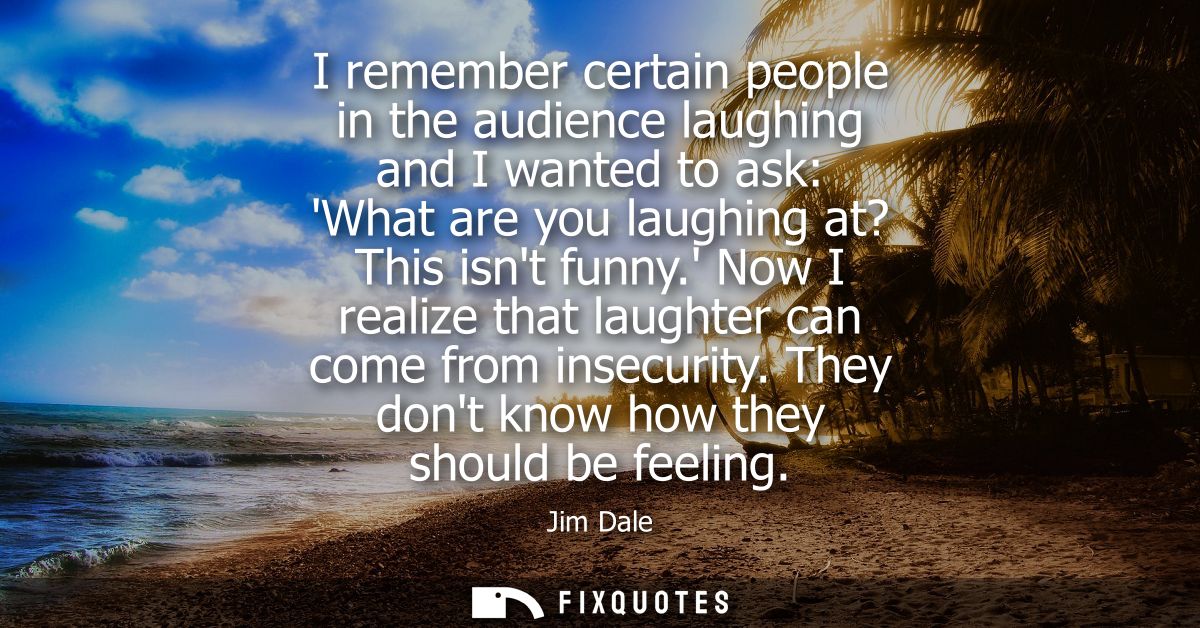"I remember certain people in the audience laughing and I wanted to ask: 'What are you laughing at? This isn't funny.' Now I realize that laughter can come from insecurity. They don't know how they should be feeling"
About this Quote
Jim Dale reflects on a revealing moment as a performer, observing the audience’s reaction during what was meant to be a serious or emotionally charged moment on stage. The presence of laughter from the audience, when he hadn’t intended anything humorous, initially confused and frustrated him. His instinct was to confront the audience, questioning why they found amusement in something that, to him, was anything but funny. This visceral response embodies the disconnect that can arise between the artist’s intentions and the audience’s reception.
Over time, Dale gained a deeper understanding of human behavior, recognizing that laughter does not always signify humor or ridicule. Sometimes, people laugh as a reflex, a way to manage discomfort or uncertainty. Emotional ambiguity, tension, or vulnerability projected from the stage can trigger in the audience a feeling of awkwardness, nervousness, or even empathy they are unsure how to express. Laughter becomes a social mechanism to break the tension, a shield against emotional exposure. Rather than an intentional show of disrespect or a simple misunderstanding, the laughter is a sign of their own struggle to process and engage with the moment.
This realization underscores the complex relationship between performers and their audience. The audience is not a homogeneous group; each individual brings personal experiences, cultural backgrounds, and emotional readiness to the shared moment. As a performer, learning to recognize unexpected reactions as a form of communication can transform frustration into empathy. The laughter may signal that the audience is invested emotionally, even if they lack the tools to respond “appropriately.” Instead of feeling slighted by this reaction, performers can view it as an opportunity to connect more deeply, knowing that their work is provoking thought or feeling, even if the response takes a different form than anticipated. Ultimately, this reflection points to the unpredictable, dynamic energy at the heart of live performance, reminding us that art often elicits vulnerability, not just from those on stage, but from every face in the dark.
More details
About the Author

